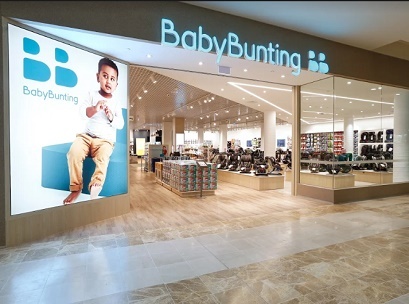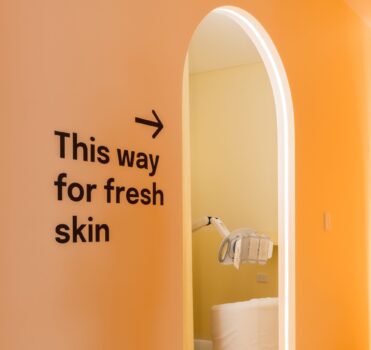
Baby Bunting has unveiled its first rebrand in 40 years, featuring a cleaner, subtler logo and gender-neutral colour palette. It is the most visible aspect of the specialty retailer’s broader efforts to modernise its offering and boost sales in a category that – for better or worse – largely is immune from major swings in consumer sentiment and spending.
Launched last week at the opening of Baby Bunting’s new store in Westfield Doncaster shopping centre, the new branding will be rolled out to all 54 stores in the network and online over the coming months.
It comes as the retailer aims to forge a deeper connection with its customers through an improved loyalty program and online offering, new in-store services and more personalised and content-driven advertising.
“The rebrand is the start of several changes that will help us make a more emotional connection with our customers,” Sue Dawson, Baby Bunting’s general manager of marketing, told Inside Retail Weekly.
Chief among these is a shift away from generic emails to personalised marketing campaigns based on customers’ specific needs.
“We have a reasonably big database of customers, and traditionally, we sent out the same email to everyone,” Dawson said.
“But now when you join, we ask whether you’re pregnant or a new mum, and we send you relevant content.”
Some of this content is product-focused, but a significant chunk is purely educational.
“We’ve invested heavily in a suite of articles and videos to share helpful information about what happens when you first bring baby home and what you need to know at different milestones,” Dawson said.
This investment was based on customer feedback, which revealed a strong desire for advice outside of the store environment, including on the website and social, and for more relevant information when it comes to products, rather than blasts about upcoming sales.
Baby Bunting in the past didn’t have people with the right skillset to meet these demands, but this is changing, according to Dawson, who recently hired a new team member to revamp the brand’s loyalty program.
“We haven’t had those people in our team, but we do have some of them now; we’re building that strength,” she said.
Customers also said they wanted more in-store services. Baby Bunting has offered a car seat-fitting service for some time, and Dawson said the company is considering offering new services in future, though she declined to elaborate.
A defined market
Baby Bunting last week reaffirmed its full-year guidance for FY20, despite a slowdown in same-store sales growth over the course of Q1. The retailer attributed this to the cycling of unusual trading conditions in the first quarter of FY19, which was affected by the closure of Babies R Us and clearance activity in September 2018.
But shares in the company have fallen more than 8 per cent since the trading update, a sign that investors view the result as evidence that the recent tax cuts have failed to stimulate consumer spending.
Unlike many retailers, Baby Bunting is somewhat immune from dips in consumer sentiment, since millions of Australians continue to have children each year, even if they’re not buying houses or dining out. Dawson said this fact combined with Baby Bunting being the only national retailer in its category, puts the business in a unique situation.
“I think the beauty of our business is that it’s more or less stable. We have a very defined market, our customers are either expecting to have a baby, or they have a child, and they’re exiting our stores by the time their youngest child is around three or four years old,” she said.
“Most customers go on a very similar journey, and we understand that journey very well.”
First step towards endless aisle
The retailer has a long-term target of 80 stores and plans to seek out more locations in shopping centres going forward. The Doncaster store that opened last week will serve as a model for future stores, with parenting amenities, extra seating around key categories where parents typically take longer to make a purchase, such as prams, and less “clutter”, according to Dawson.
“The ambition is that eventually we get to an endless aisle situation, where we don’t have to put every product in-store,” she said, referring to the technology that would enable the customer to browse every product on a screen in-store, buy it online and have it shipped to the store or their home address.
This would require a higher level of inventory accuracy than Baby Bunting currently has. However, the company has taken the first step towards this initiative by relaunching its e-commerce platform in July and investing in a new merchandising system, set to go live in early 2020. At the same time, it has launched online fulfilment centres in two store locations, which fulfil online orders from store stock, reducing delivery times.
“We’re not completely there yet, but we’re investing in systems that will get us there,” Dawson said.





